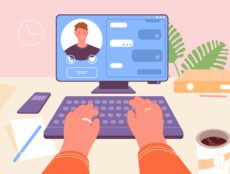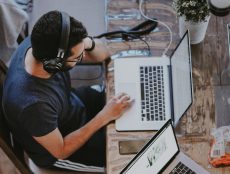
Articles
Higher Education
Op-Ed
Democratizing Science Education Starts With Expanded Accessibility
By Joe Ferraro
February 22, 2021
Higher education institutions had to pivot quickly last March when Covid-19 forced the nation into lockdown. Even eleven months into the pandemic, universities are still trying to figure out how to attract, retain and engage students. A particular challenge I hear daily: how do we teach fields of study — like the sciences — that seemingly require in-person learning in wet labs?
Exacerbating the problem, colleges and universities are facing a demographic cliff. From 2006 to 2008, the U.S. birth rate began to decline after rising to its highest level in two decades, meaning the pipeline of high school graduates are lower this decade too. To make up for lost enrollment, higher education institutions are eyeing nontraditional students.
Since there is an increase in nontraditional students over the age of 25 enrolling in higher education, we can expect this to continue. The profile of these students can vary: some may be looking for a new line of work given the current economic climate. Others may already work in the field and are looking to upskill. Others still may be looking to complete a degree they started years ago. What is one thing that these students all have in common? Their lives cannot accommodate the traditional science course: 3 hours per week of lecture, and 3 hours a week for lab, all on campus. The question schools are asking themselves is this: how do we provide a high quality science education that accommodates these students? The schools who can answer this question are going to be the winners in the next 10 years.
Reimagining Higher Education
With the rise of nontraditional students comes the rise of alternate options to a traditional four-year education. The number of credential-based programs has increased to over 600,000 since 2018. Options like bootcamps, MOOCs, and science certification courses such as DNA Decoded on Coursera are less time consuming, cost-effective and tailored to the skills people need to learn to achieve a promotion or get a new job. Jennifer Bobenko, professor at University of Maryland Eastern Shore, calls it “Multistream Science Education,” where nontraditional students would be able to earn course and lab credit via a unique partnership between a degree-granting institution, a MOOC provider, industry, and a virtual lab provider like Labster.
Did you ever wonder how atoms and ions gain, share or lose their electrons? This 2.5 min animation from Labster’s Ionic and Covalent Bonds virtual lab simulation explains how it all works – Watch it now: https://t.co/GW42faRTqt#edtech #onlinelearning #education #chemistry
— Labster (@labster) December 12, 2020
Science degrees are highly structured and require consistent on-campus presence because of the labs that accompany lectures each semester. Could this be why many nontraditional students typically stray away from entering the sciences or completing a degree in the field? Maybe, but until campuses fully reopen, colleges and alternative certificate programs need to find a way to provide enhanced lab experiences during this virtual learning period and beyond.
Virtual lab simulations will be key in making science education accessible to all learners by removing the need to be at a wet lab during the pandemic. These labs contain simulated learning environments that allow students to complete laboratory experiments and explore concepts and theories entirely online. Simulations range in subjects from biochemistry to ecology at different education levels.
While virtual labs shouldn’t entirely replace physical ones, it can serve as a supplemental learning resource until campuses are fully open. MOOCs and certificate programs can also utilize it as a visual aid to teach complex concepts, to refresh students’ knowledge before teaching new material where students can earn credits or a certificate upon completing the course.
Looking Past Covid-19
As we look ahead to a post-Covid world, alternative options to traditional higher education will continue to thrive. Science courses will be more accessible for nontraditional students looking to upskill.
The traditional format of science education at colleges consisting of a lecture and a lab that runs concurrently may be redefined in the coming years. In the future, this may entail a lecture paired with a virtual lab simulation and an in-person lab assignment that’s intensive rather than stretched out through the semester. We’ll also see colleges and universities focusing more on this growing demographic by adopting new, flexible methods of instruction that correlate with the nontraditional student’s lifestyle.
Joe Ferraro is the head of global sales at Labster.
Featured Image: Louis Reed, Unsplash.









No Comments